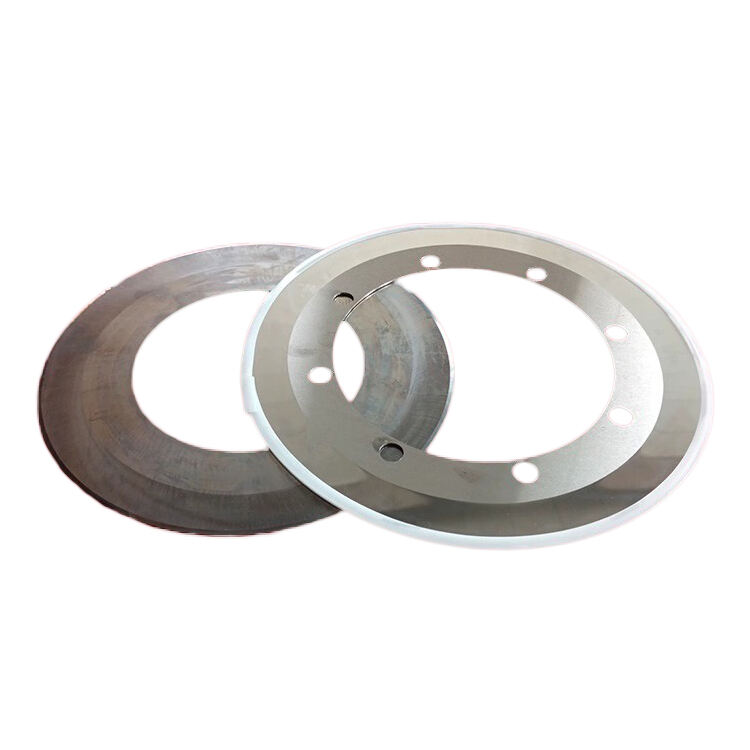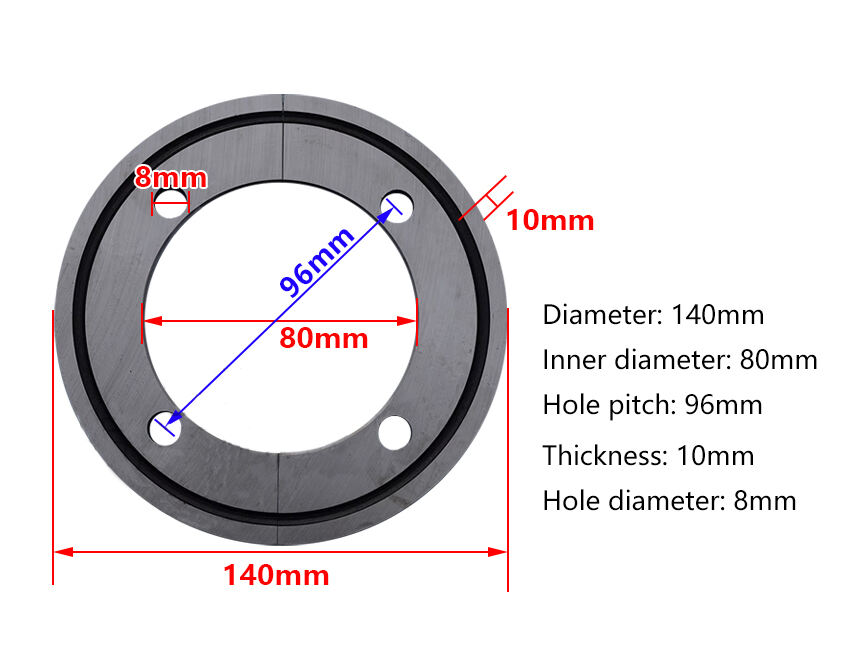Identifying Causes of Rough Paper Cuts
Inspecting the Round Paper-Cutting Blade Edge for Dullness
Ensuring the sharpness of a round paper-cutting blade is vital for achieving smooth cuts and high-quality finished products. A dull blade can lead to uneven cuts, resulting in rough edges that detract from the overall quality. Regularly inspecting the blade for signs of dullness is essential. Begin with a visual check against a contrasting background to easily spot any uneven reflections, indicating blade dullness. Utilizing a sharpness gauge can provide a precise measure of the blade's condition, allowing for better decision-making regarding necessary sharpening. Maintaining cutting effectiveness through consistent checks will preserve both blade dullness and product quality.
Checking for Chips or Damage Affecting Shearing Quality
Detecting chips or damage on the blade edge is crucial, as even small imperfections can cause significant shearing failures, leading to rough paper cuts. To spot these tiny chips, use magnification tools that reveal areas not visible to the naked eye. It's important to evaluate the blade's condition thoroughly to identify any uneven or damaged areas that could disrupt shearing quality. Keeping a record of any damage observed helps in predicting future maintenance needs and enables more proactive management of cutting defects, ensuring the blade's durability and efficiency remain optimal.
Assessing Blade Wear Patterns Through Magnified Examination
Magnifying the blade for wear pattern analysis offers deeper insights into cutting efficiency and maintenance. Identifying areas with pronounced wear can signal which sections of the blade need more frequent care, whether sharpening or replacing. Analyzing these patterns in correlation with the type of material and usage practices can provide valuable insights, helping adjust techniques to avoid future wear-related issues. Regular assessments ensure a better understanding of the blade's lifespan, facilitating the efficient management of cutting operations and assisting in budgeting for future blade replacements. Monitoring and analyzing wear patterns lead to enhanced cutting performance and operational longevity.

Optimizing Blade Alignment and Clearance
Ensuring Blade Parallelism to Material Surface
Achieving uniform paper cuts requires maintaining blade parallelism to the material surface. To accomplish this, I utilize alignment jigs or laser alignment tools to meticulously check for any deviations. Even the slightest misalignments can cause uneven cutting pressure, potentially leading to rough finishes or even paper tears. Regular inspections every few weeks ensure that alignment remains optimal, especially in environments with high cutting demands. Consistent monitoring not only improves cutting uniformity but also extends the blade's operational life, ensuring a seamless workflow.
Adjusting Upper/Lower Blade Clearance for Clean Shearing
Proper blade clearance is crucial for effective shearing; it prevents jams caused by too little clearance while avoiding rough edges resulting from too much clearance. The ideal clearance measurement varies depending on the blade type and paper quality. Therefore, regular adjustments are necessary to optimize performance. I document these clearance settings to facilitate quick adjustments during routine maintenance. This meticulous approach not only improves shearing effectiveness but also enhances the overall quality of the finished products.
Calibrating Blade Holder Alignment Using Precision Tools
Calibrating the blade holder with precision tools like calipers ensures accurate alignment, crucial for smooth operation. Regular calibration checks prevent misalignment over time, fostering consistency in cut quality. I find that employing manufacturer guidelines aids in attaining precise calibrations for different blade models. Such practices underpin operational efficiency by aligning cutting tools perfectly, ensuring every cut meets the highest standard of quality. This attention to detail plays a significant role in maintaining the overall effectiveness of cutting operations.
Adjusting Blade Pressure Settings
Balancing Compression Force Between Cutting Blades
Achieving the right compression force is crucial for efficient cutting operations. Utilizing pressure gauges can significantly aid in setting optimal blade pressure, as too much or too little can compromise cutting efficiency. For example, excessive pressure can lead to unnecessary wear and heat distortion, shortening the blades' life. On the other hand, insufficient pressure might result in incomplete cuts. It's important to regularly adjust pressure settings based on the material thickness and type of paper being processed to ensure ideal cutting outcomes.
Testing Pressure Consistency Across Cutting Surface
Consistency in pressure across the cutting surface ensures uniform cut quality. Implementing testing protocols is essential for maintaining this consistency, as uneven pressure can result in jagged cuts. Utilizing pressure sensors during operation can help detect any inconsistencies early on, allowing for timely adjustments. Furthermore, maintaining a reporting system to log pressure readings can help track changes over time and identify trends that might indicate underlying issues in the cutting process.
Modifying Spring Tension for Different Paper Densities
Adjusting spring tension is necessary to accommodate different paper densities and ensure that the blade's cutting behavior matches the material's specificities. Implementing a systematic method for adjusting tension based on various paper types can lead to fewer errors across operations. Calibration tools are particularly useful for achieving the right spring tension for differing production jobs, ensuring high cutting quality. This approach not only improves the overall cutting process but also extends blade life by reducing unnecessary strain.
Blade Maintenance and Resharpening
Proper Resurfacing Techniques for Round Cutting Blades
Maintaining the efficacy of round cutting blades requires utilizing proper resurfacing techniques. Poor methods may not only damage the blades but also hinder cutting efficiency and operational longevity. It is essential to adopt systematic approaches, such as the correct use of grinding tools, to ensure the blades remain sharp and functional. Additionally, staff training on these techniques can greatly reduce the likelihood of errors during maintenance operations, ultimately extending the life of the blades.
Determining Optimal Sharpening Angles (25-35° range)
The selection of appropriate sharpening angles, typically within the 25-35° range, is critical for optimizing blade cutting performance. Incorrect angles can lead to inefficient cuts and compromise overall quality. Thus, it’s important to conduct regular checks to ensure adherence to the recommended angle range and prevent alignment issues. Furthermore, experimenting with angles based on specific paper types can refine performance and enhance the precision of cuts.
Implementing Diamond-Wheel Sharpening Protocols
Diamond-wheel sharpening is renowned for creating a finer edge on cutting blades, resulting in smoother cuts. Implementing standardized processes for diamond-wheel techniques is crucial to achieving consistency and precision. Investment in high-quality diamond wheels ensures not only durability but also refinement in sharpening processes, ultimately enhancing cutting quality. Regular training on these methods should be a priority, as it can lead to higher production quality and operational efficiency.
Preventing Future Cutting Imperfections
Establishing Routine Blade Inspection Intervals
Regular inspections of cutter blades are crucial for maintaining their optimal performance and ensuring the quality of cuts remains high. By scheduling consistent inspections, you can proactively address any issues and prevent future imperfections. Most experts suggest that inspections should occur every few weeks, although this may need adjustment based on the frequency of use and type of cutting materials. This proactive approach is key to identifying signs of wear early on and assessing the need for maintenance or replacements. Additionally, keeping a detailed log of each inspection can help track the wear patterns of your blades, helping in predictive maintenance and optimizing your operational efficiency.
Lubricating Blade Bearings for Smooth Rotation
Proper lubrication of blade bearings is essential for reducing friction, leading to smoother operation and preventing unnecessary wear on cutting equipment. Setting up a planned maintenance schedule that incorporates regular lubrication checks can significantly enhance cutting performance and extend the machine's lifespan. It is vital to use lubricants that meet the manufacturer's specific recommendations, as this ensures continued effectiveness and prevents damage from incompatible substances. A well-implemented lubrication routine ensures the bearings stay in prime condition, contributing to consistent, high-quality cuts.
Creating Material-Thickness Adjustment Reference Charts
Developing reference charts for material thickness adjustments can drastically streamline the cutting process by minimizing guesswork. Such charts allow operators to confirm the settings needed for specific paper thicknesses quickly, ensuring precision from the outset and reducing errors. These charts should be regularly updated based on feedback from production teams to maintain accuracy and usability. Furthermore, incorporating data and insights from past jobs can optimize future operations, allowing adjustments that align with best-case outcomes and improve overall operational efficiency. These charts can be a valuable tool for ensuring consistent and high-quality cuts tailored to various materials.
Troubleshooting Persistent Cutting Issues
Resolving Blade Wobble through Spindle Maintenance
Blade wobble can be a significant obstacle to cutting precision, making spindle maintenance a vital task. When blade wobble occurs, it often results from poor maintenance of the spindle, leading to degraded cut quality. To address this, routine cleaning and lubrication of the spindle can prevent accumulations that contribute to wobbling. By eliminating debris and ensuring smooth operations, the cutting performance remains consistent. I also recommend using specialized tools designed to detect and rectify wobbling quickly, thereby minimizing any downtime caused by this issue.
Addressing Thermal Expansion in High-Speed Operations
In high-speed operations, thermal expansion can alter blade dimensions, causing inaccuracies in cuts. It is essential to closely monitor these operations to identify and mitigate the effects of temperature changes. A practical solution is implementing cooling systems to maintain an optimal operating temperature during high-speed cutting. This proactive measure ensures that the blade remains consistent in size and performance. Additionally, conducting regular temperature checks can offer insights into performance variations, allowing us to make informed adjustments to maintain cutting consistency.
Rectifying Material Feed System Misalignments
Misalignments in the material feed system often lead to inconsistent cuts, making it crucial to assess and correct these issues promptly. Regular checks and adjustments are necessary to ensure that materials are fed uniformly and accurately. Having a detailed log of feed adjustments can be extremely helpful when troubleshooting persistent problems. This documentation enables us to identify recurring issues and make informed adjustments that enhance cutting precision and address operational challenges effectively.
By systematically addressing these common cutting issues, we can significantly improve the quality and consistency of our cuts, ensuring that our operations remain efficient and productive.
FAQ Section
What are common symptoms of a dull round paper-cutting blade?
A dull round paper-cutting blade often results in rough, uneven paper cuts which can detract from the finish's quality.
How can I detect chips or damage in my blade?
Using magnification tools can help detect tiny chips or damage on the blade edge that may not be visible to the naked eye.
What is the ideal blade clearance setting?
The ideal clearance varies depending on the blade type and paper quality. Regular adjustments based on these factors optimize performance.
Why is blade parallelism crucial for paper cutting?
Maintaining blade parallelism ensures uniform cuts and prevents issues like rough finishes or paper tears by eliminating uneven cutting pressure.
How often should blade inspections be scheduled?
Blade inspections should be conducted every few weeks, although frequency can vary based on the type of paper and cutting demands.

